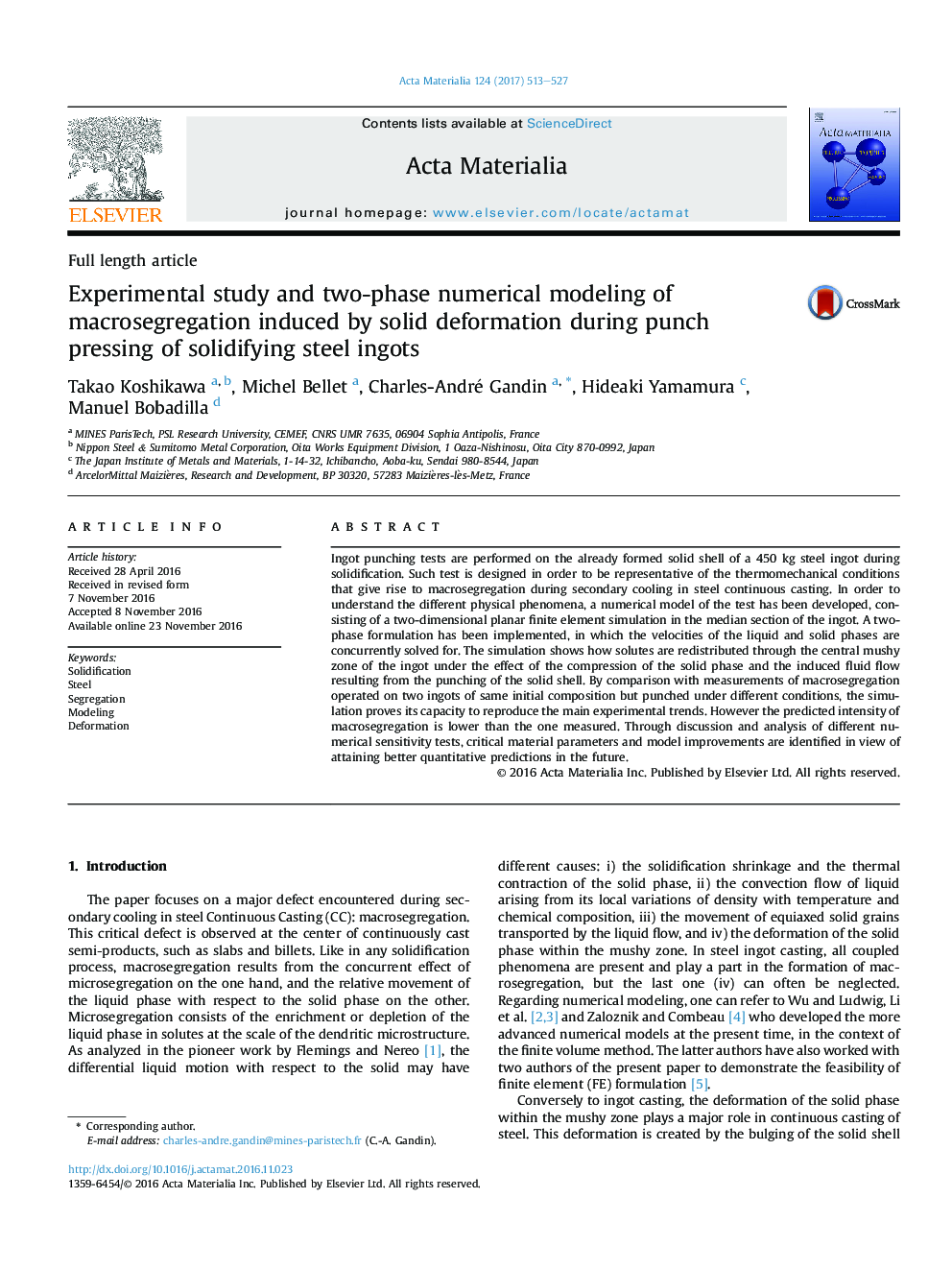| Article ID | Journal | Published Year | Pages | File Type |
|---|---|---|---|---|
| 5436470 | Acta Materialia | 2017 | 15 Pages |
Ingot punching tests are performed on the already formed solid shell of a 450Â kg steel ingot during solidification. Such test is designed in order to be representative of the thermomechanical conditions that give rise to macrosegregation during secondary cooling in steel continuous casting. In order to understand the different physical phenomena, a numerical model of the test has been developed, consisting of a two-dimensional planar finite element simulation in the median section of the ingot. A two-phase formulation has been implemented, in which the velocities of the liquid and solid phases are concurrently solved for. The simulation shows how solutes are redistributed through the central mushy zone of the ingot under the effect of the compression of the solid phase and the induced fluid flow resulting from the punching of the solid shell. By comparison with measurements of macrosegregation operated on two ingots of same initial composition but punched under different conditions, the simulation proves its capacity to reproduce the main experimental trends. However the predicted intensity of macrosegregation is lower than the one measured. Through discussion and analysis of different numerical sensitivity tests, critical material parameters and model improvements are identified in view of attaining better quantitative predictions in the future.
Graphical abstractMacrosegregation forming during continuous casting (CC) of steel is studied by experimental and numerical models. A punching tool deforms the surface of a solidifying 0.16 m thick Ã 0.5 m width Ã 0.75 m height ingot, simulating the effect of the rolls of the CC machine. Deformation of the solid phase leads the redistribution of the liquid and the chemical species, showing (top left) a darker solute rich region at the top part of the ingot explained by (top right) expellation of solute rich liquid from shrinkage pipe predicted from two-phase thermomechanical finite element modeling, induced by (bottom right) the distribution of the liquid velocity with respect to the solid velocity. The resulting (bottom left) depletion of Mn at the center of the ingot is revealed by (blue) the predicted profile extracted from the FE simulation and (square and error bars) measurements and the vertical white band on the micrographic cross section, with position highlighted in the bottom right simulated domain using a dashed yellow rectangle.Download high-res image (316KB)Download full-size image
